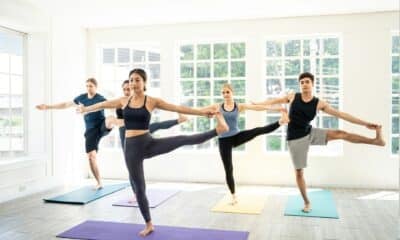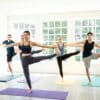The Advantages and Disadvantages of Multitasking During Exercise
These days, it’s easier than ever to multitask while exercising, whether it’s watching TV while on the elliptical, checking emails during clamshells, or reading on a stationary bike. With the rise of home workout options, the pressure to always be available, and endless entertainment choices, just exercising without also doing something else can feel like a missed opportunity.
Various studies have indicated that as we attempt to do more tasks simultaneously, our performance generally decreases, according to Darren Lumbard, a psychologist who works with athletes at Atlantic Sports Health. Multitasking during exercise can also lead to safety concerns and affect our ability to use working out as a form of escape or a full mind-body experience.
However, when done intentionally, multitasking can be beneficial, especially if it helps you stay motivated to work out, as stated by Lumbard.
How to Ensure Multitasking Enhances Your Workout
1. Clarify Your Objectives
Deciding whether multitasking is suitable during exercise largely hinges on your fitness goals and how you define success. If you have specific fitness targets, like improving running speed, cross-training for a sport, or building upper-body strength, focusing entirely on your workout is crucial to optimize performance, advises Lumbard. Introducing multitasking may hinder potential gains.
If you view exercise as an escape or stress-reliever, activities like watching TV or listening to a podcast can enhance your experience, while dealing with work emails may detract from it. If your aim is simply to squeeze in a few minutes of movement amid a hectic schedule, monitoring emails or listening to a presentation in the background may enable you to achieve that, which is better than not exercising at all, according to Lumbard.
2. Ensure Safety
The type of workout and your familiarity with it determine whether multitasking is safe. Caution is advised when running on a treadmill or exercising outdoors. Intense workouts like HIIT, Tabata, and weightlifting are not ideal for multitasking.
Even in low-impact exercises like Pilates, avoid distractions that may compromise form and lead to injury. Cassey Ho, Blogilates founder, suggests choosing simple, repetitive movements for multitasking. For unfamiliar movements, focus on proper form without distractions. Wait for rest breaks to address emails or messages, advises Mathew Welch, an exercise physiologist.
3. Monitor Your Feelings
Observe how multitasking affects your workout and performance. Ho notes that external factors can influence workout intensity. Evaluate if multitasking enhances or detracts from your exercise routine. If distractions reduce output or leave you feeling stressed, reevaluate your approach. Exercise can aid stress management, but stress induced by multitasking can negate its benefits, emphasizes Lumbard.
If you find yourself multitasking due to boredom or lack of focus, adjust your routine. However, if time constraints hinder exercise, multitasking can be a viable option as long as it’s done safely, concludes Lumbard.
















